An Ode to The Road Goes Ever On: A Song Cycle
30 Jan, 2022
2022-1-30 12:05:25 AM UTC
2022-1-30 12:05:25 AM UTC

I recently picked up the last edition needed to complete a hardcover set of The Road Goes Ever On: A Song Cycle by JRR Tolkien and Donald Swann, hardback books of sheet music by Swann set to the poetry of Tolkien’s legendarium, especially the Lord of the Rings. This got me thinking about how this wonderful edition to the Tolkien catalogue came to be.
Swann composed the nine settings over a period of 12 years. He began by setting seven poems from The Lord of the Rings to music in Ramallah, near Jerusalem, in 1965. These included A Elbereth Gilthoniel and O Orofarnë, Lassemista, Carnimírië; he replaced the latter with Namárië for the first edition as he felt it was too similar to Henry Purcell's "Dido's Lament"[1]. The scholar of music Emily Sulka notes that the song cycle was created because Swann and his wife liked Tolkien's writings and set six of the poems to music. Tolkien liked five of the settings but proposed a melody similar to a Gregorian chant in place of the sixth, for Namárië. She notes too that Swann wanted them to be performed as a group without applause between the songs.[6]
The book title is taken from "The Road Goes Ever On", the first song in the collection. The songs form a song cycle, designed to fit together when played in sequence. The ninth song "Lúthien Tinúviel" was added in an appendix rather than in the main sequence. With Tolkien's approval, Donald Swann wrote the music for this song cycle; much of it resembles English traditional music or folk music. The sole exception is the Quenya song "Namárië", which was based on a tune by Tolkien himself that has some affinities to Gregorian chant. In his foreword to the second edition, Swann explains that he performed the song cycle to Tolkien in Priscilla Tolkien's garden; Tolkien approved of the music except for "Namárië", and hummed its melody; Swann used that for the song.[2][7]
As well as the poems, notes, and translations, Tolkien contributed decorations in the form of elvish script for the top and bottom of every page of sheet music, and tailpieces for the spaces at the ends of the poems. The book contains one of the longest samples of the language Quenya, in the shape of the song "Namárië", as well as the Sindarin prayer "A Elbereth Gilthoniel" with grammatical explanations. Tolkien's notes in the book provide information about the First Age of Middle-earth that was not otherwise publicly available until the publication of The Silmarillion[3][4].
An LP record of this song cycle entitled Poems and Songs of Middle Earth was recorded on 12 June 1967, with Donald Swann on piano and William Elvin adding vocals. Side one of this record consisted of Tolkien himself reading five poems from The Adventures of Tom Bombadil. The first track on side two was Tolkien reading the Elvish prayer "A Elbereth Gilthoniel."[5]
 A 1967 first edition 1st print published by HMCO, illustrated by JRR Tolkien and Samuel Bryant (20,000 copies), hardback in a dust jacket. Includes music for seven poems by J.R.R. Tolkien: The Road Goes Ever On, Upon the Hearth the Fire is Red, In the Willow-meads of Tasarinan, In Western Lands, Namárië, I Sit Beside the Fire and Errantry.[9]
A 1967 first edition 1st print published by HMCO, illustrated by JRR Tolkien and Samuel Bryant (20,000 copies), hardback in a dust jacket. Includes music for seven poems by J.R.R. Tolkien: The Road Goes Ever On, Upon the Hearth the Fire is Red, In the Willow-meads of Tasarinan, In Western Lands, Namárië, I Sit Beside the Fire and Errantry.[9] A 1968 1st Ballantine edition published by Ballantine illustrated by JRR Tolkien, Samuel Bryant, and Barbara Remington, hardback without a dust jacket. Includes music for seven poems by J.R.R. Tolkien: The Road Goes Ever On, Upon the Hearth the Fire is Red, In the Willow-meads of Tasarinan, In Western Lands, Namárië, I Sit Beside the Fire and Errantry.[9]
A 1968 1st Ballantine edition published by Ballantine illustrated by JRR Tolkien, Samuel Bryant, and Barbara Remington, hardback without a dust jacket. Includes music for seven poems by J.R.R. Tolkien: The Road Goes Ever On, Upon the Hearth the Fire is Red, In the Willow-meads of Tasarinan, In Western Lands, Namárië, I Sit Beside the Fire and Errantry.[9] A 1978 second edition published by HMCO, illustrated by JRR Tolkien (10,000 copies), hardback in a dust jacket. Partly reset; revisions include a rewritten foreword, the addition of performance directions, the inclusion of a new setting, ‘Bilbo’s Last Song’, and a number of corrections. Illustrations by Samuel Bryant are omitted. Includes music for eight poems by J.R.R. Tolkien: The Road Goes Ever On, Upon the Hearth the Fire is Red, In the Willow-meads of Tasarinan, In Western Lands, Namárië, I Sit Beside the Fire, Errantry and Bilbo’s Last Song. [9]
A 1978 second edition published by HMCO, illustrated by JRR Tolkien (10,000 copies), hardback in a dust jacket. Partly reset; revisions include a rewritten foreword, the addition of performance directions, the inclusion of a new setting, ‘Bilbo’s Last Song’, and a number of corrections. Illustrations by Samuel Bryant are omitted. Includes music for eight poems by J.R.R. Tolkien: The Road Goes Ever On, Upon the Hearth the Fire is Red, In the Willow-meads of Tasarinan, In Western Lands, Namárië, I Sit Beside the Fire, Errantry and Bilbo’s Last Song. [9] A 2002 third edition published by HarperCollins, illustrated by JRR Tolkien, and Samuel Bryant, hardback in a dust jacket. A similar edition was issued by HarperCollins in Canada, but the dust jacket included titling in a style similar to that used for the 1968 and 1978 editions. Includes music for nine poems by J.R.R. Tolkien: The Road Goes Ever On, Upon the Hearth the Fire is Red, In the Willow-meads of Tasarinan, In Western Lands, Namárië, I Sit Beside the Fire, Errantry, Bilbo's Last Song and Lúthien Tinúviel. Also includes translations of Namárië and A Elbereth Gilthoniel, together with commentary.A CD is included with this book. It contains The Road Goes Ever On song cycle performed by Donald Swann, William Elvin and Clive McCrombie.[8]
A 2002 third edition published by HarperCollins, illustrated by JRR Tolkien, and Samuel Bryant, hardback in a dust jacket. A similar edition was issued by HarperCollins in Canada, but the dust jacket included titling in a style similar to that used for the 1968 and 1978 editions. Includes music for nine poems by J.R.R. Tolkien: The Road Goes Ever On, Upon the Hearth the Fire is Red, In the Willow-meads of Tasarinan, In Western Lands, Namárië, I Sit Beside the Fire, Errantry, Bilbo's Last Song and Lúthien Tinúviel. Also includes translations of Namárië and A Elbereth Gilthoniel, together with commentary.A CD is included with this book. It contains The Road Goes Ever On song cycle performed by Donald Swann, William Elvin and Clive McCrombie.[8]
1. Christina Scull & Wayne G. Hammond (2006), The J. R. R. Tolkien Companion and Guide, HarperCollins, 'Chronology' volume, pp. 710 & 721; ISBN 978-0-618-39113-4
2. Swann, Donald (2002) "Foreword to the Second Edition", The Road Goes Ever On, HarperCollins, p. 5
3. Tolkien, J. R. R.; Swann, Donald (2002). The Road Goes Ever On. HarperCollins. p. iii. ISBN 978-0-00713-655-1.
4. Foster, Robert (1971). A Guide to Middle-earth. Mirage Press.
5. Leonberger, Richard Garrett (2016). A Swann's Song in Middle-earth: An Exploration of Donald Swann's "The Road Goes Ever On" and theDevelopment of a System of Lyric Diction forTolkien's Constructed, Elvish Languages. Louisiana State University (PhD thesis). p. 25.
6. Sulka, Emily (2017). "J.R.R. Tolkien and the Music of Middle Earth". Channels. Centennial Library. 2 (1): 111–118. doi:10.15385/jch.2017.2.1.6. ISSN 2474-2651.
7. Jorgensen, Estelle R. (2006). "Myth, Song, and Music Education: The Case of Tolkien's the 'Lord of the Rings' and Swann's 'The Road Goes Ever On.'". Journal of Aesthetic Education. University of Illinois Press. 40 (3): 1–21.
[8]. Tolkienbooks.net
[9]. Tolkienbooks.us












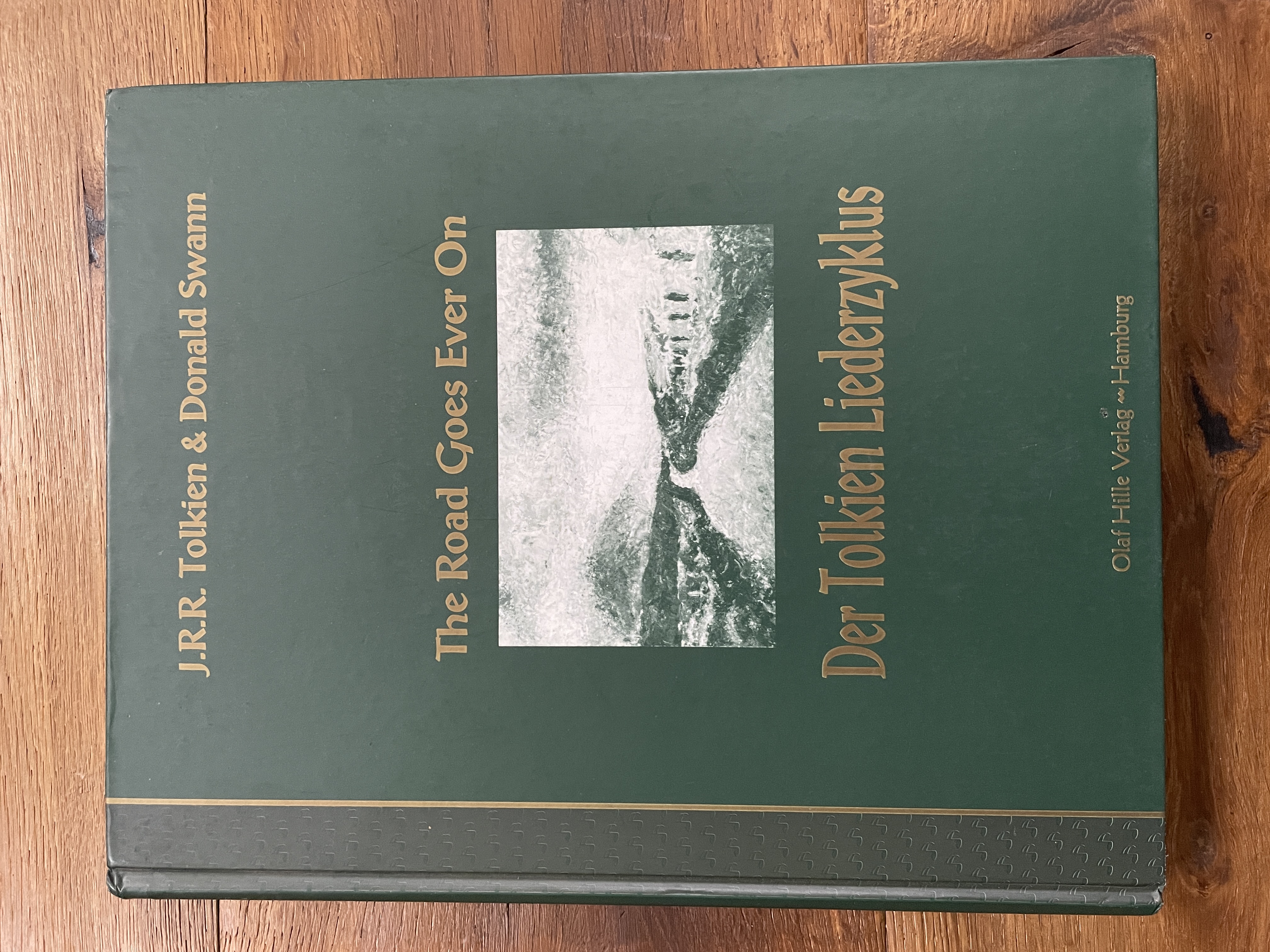
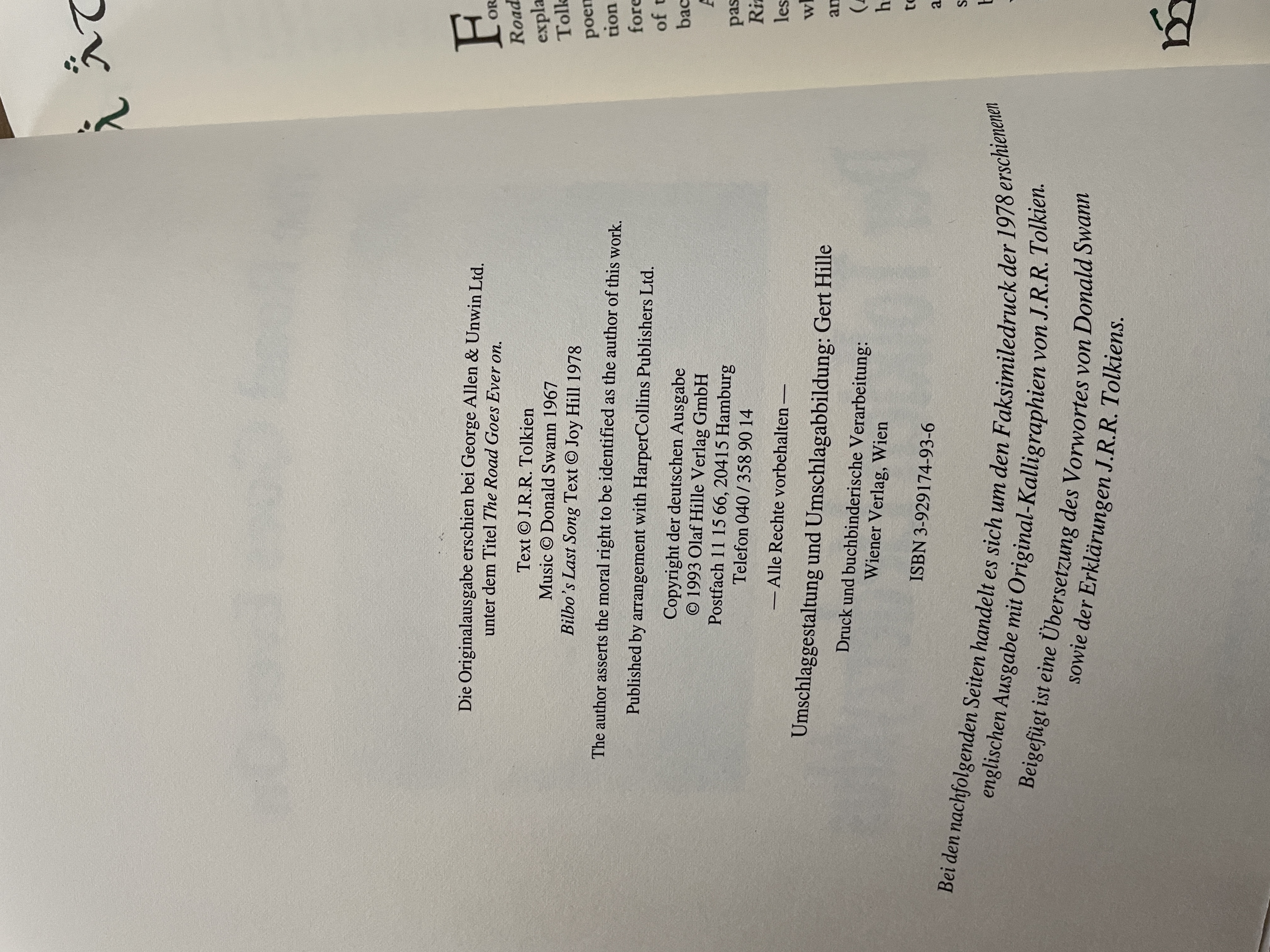
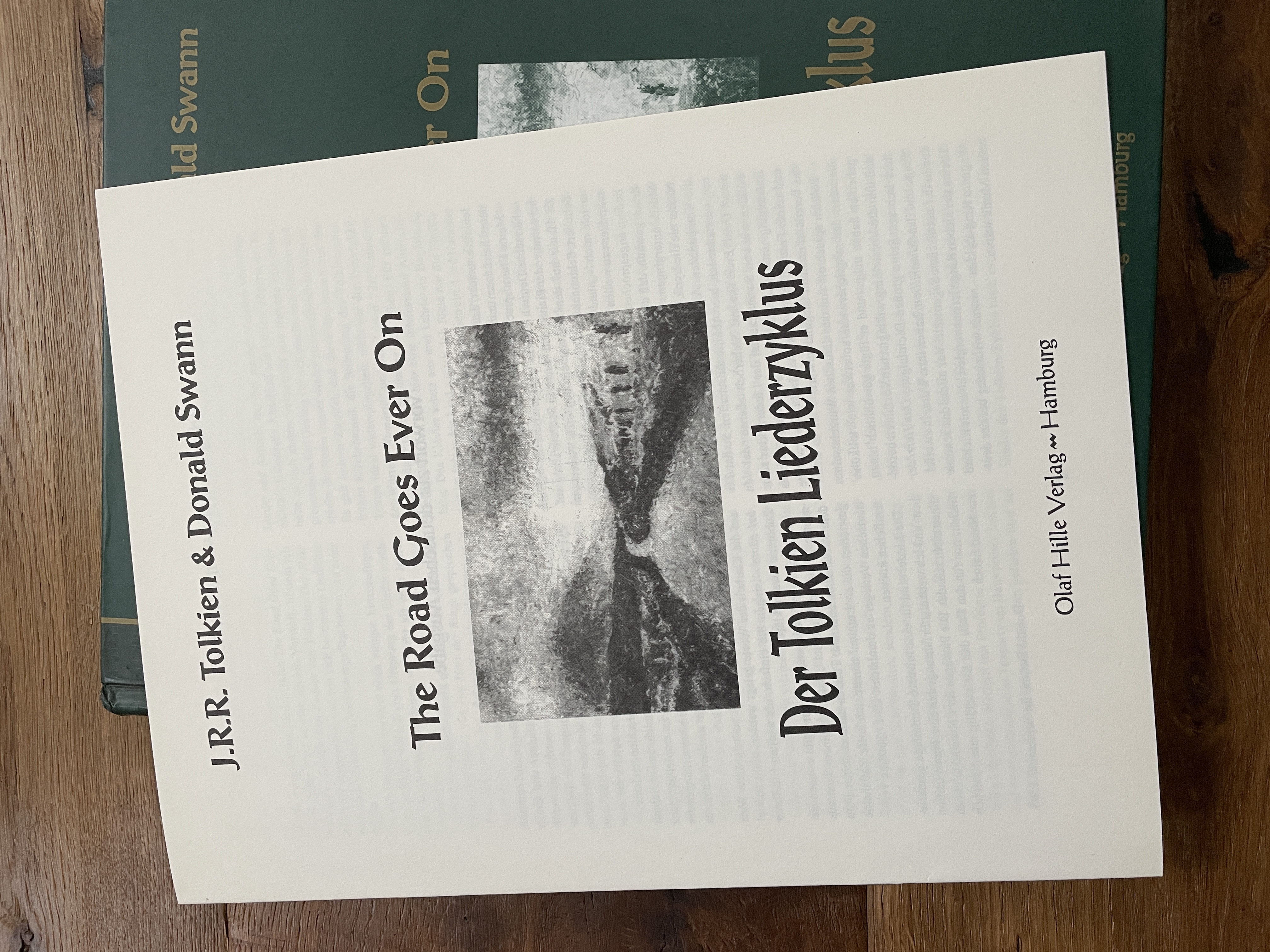
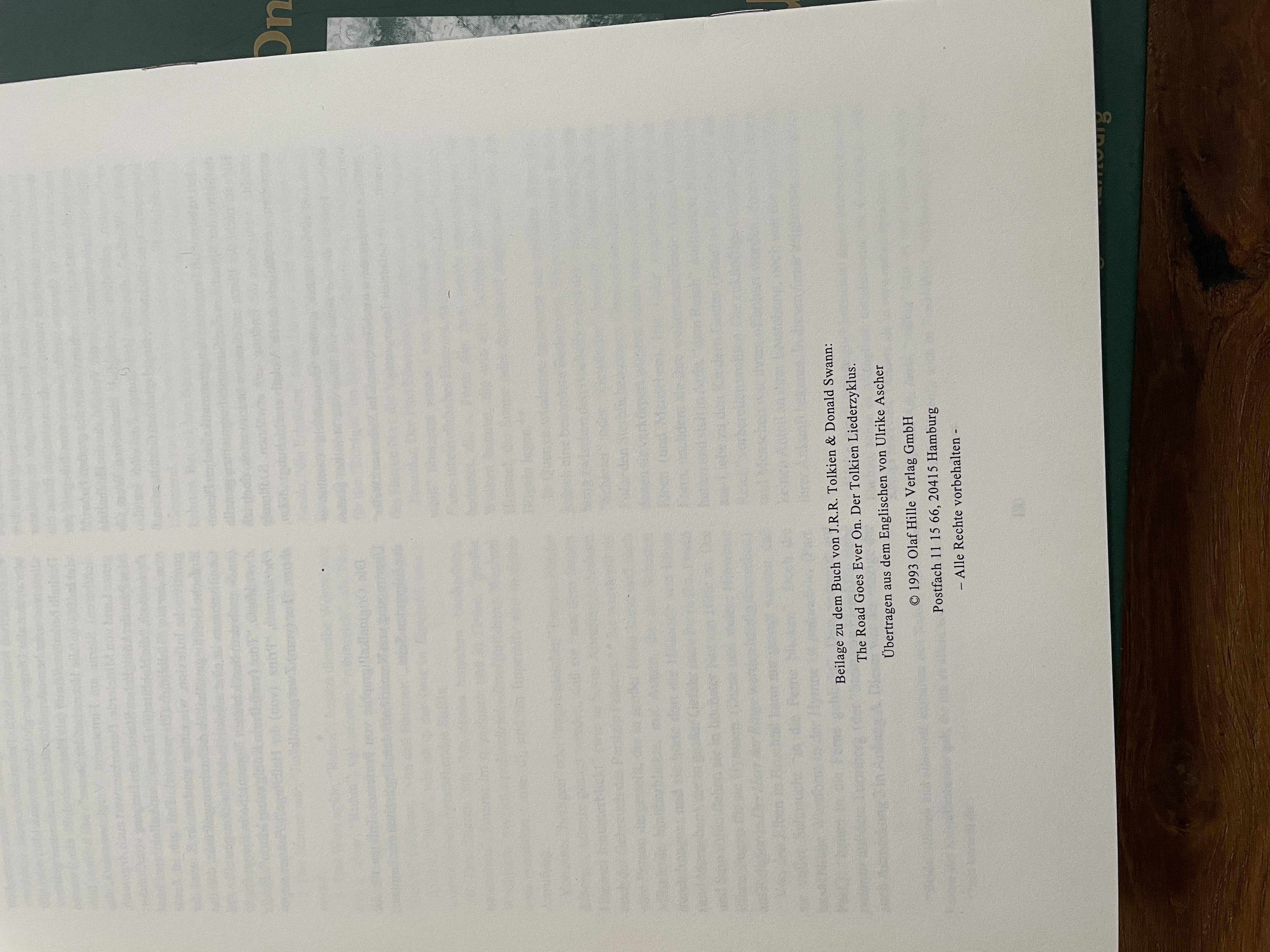

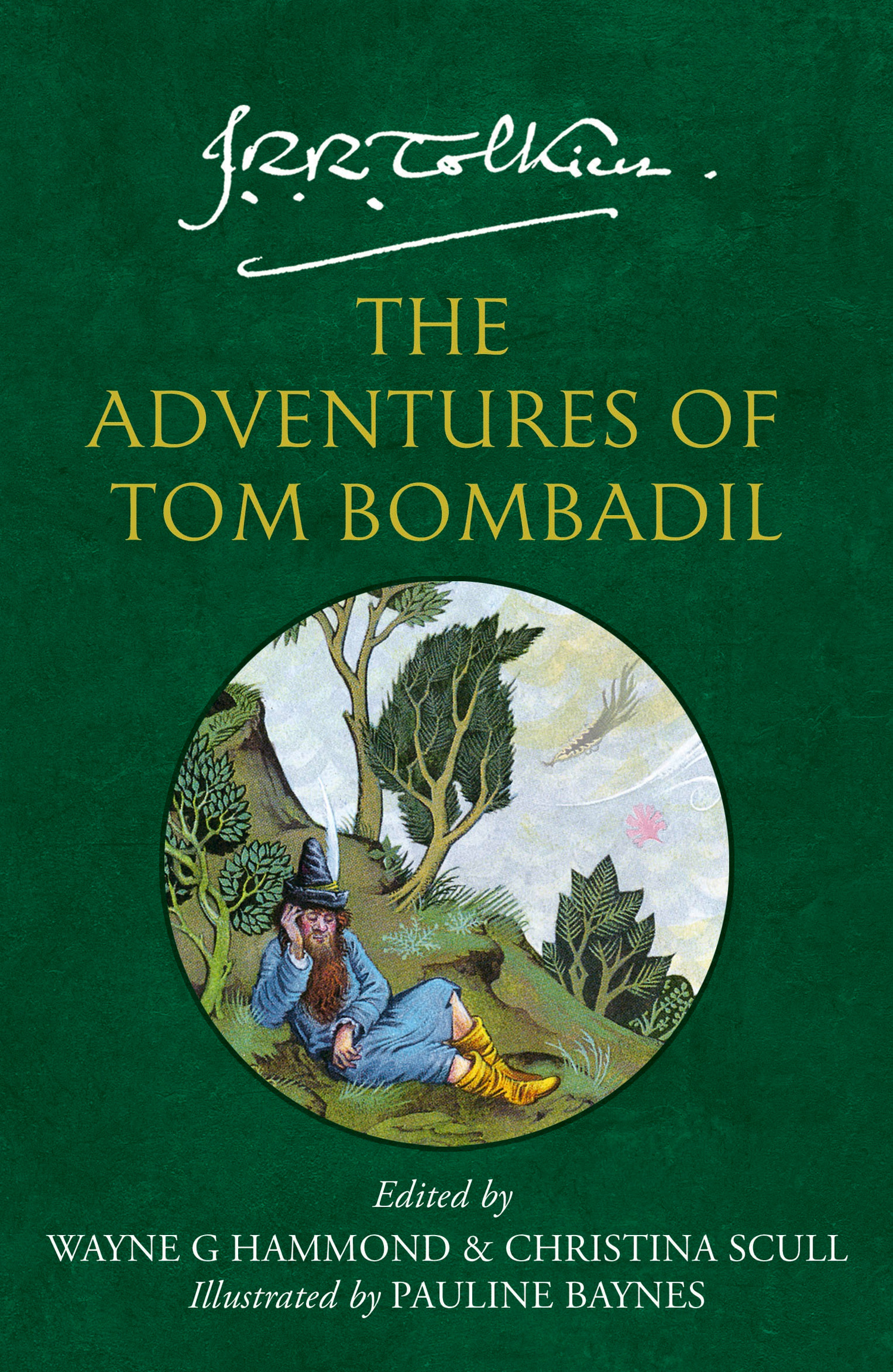
 2
2 193
193